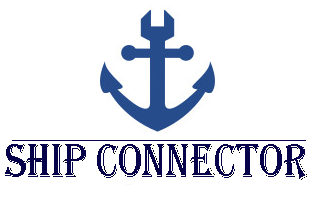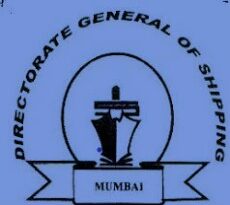Draft marks on a ship
Draft marks on a ship are markings or indicators found on the hull of a ship to show the depth of the vessel in the water. They are used to determine the ship’s draft, which is the distance between the waterline and the lowest point of the ship’s keel. Knowing the draft is crucial for various reasons, such as ensuring the vessel’s stability, determining the maximum load it can carry, and ensuring safe navigation in shallow waters.
The draft marks are usually placed on both sides of the ship’s hull at specific locations, typically near the bow (front) and stern (rear) areas. The markings are usually painted in contrasting colors for better visibility and readability. These marks can be numbers, lines, or symbols that indicate different depths.
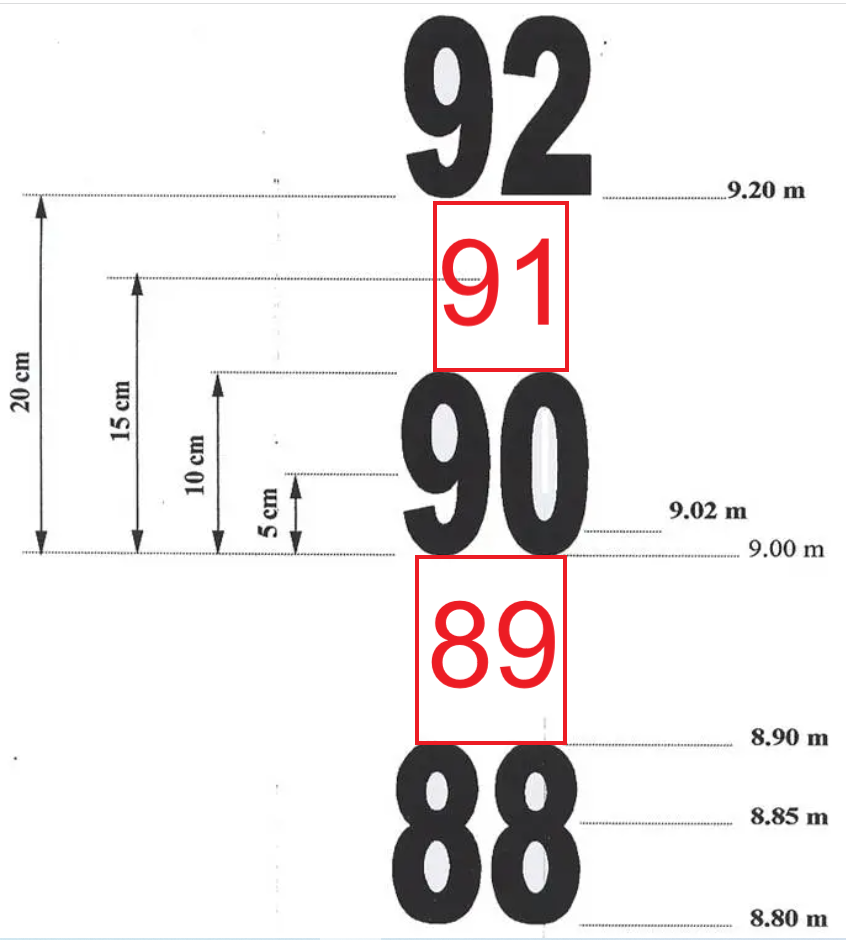
Contents
The most common type of draft marks are:
- Load Lines: These are internationally recognized markings indicating the maximum permissible draft for different load conditions, such as summer load line, winter load line, and tropical load line. These lines ensure that a ship does not carry more cargo than its safe capacity.
- Tidal Draft Marks: These marks indicate the ship’s draft in relation to the tidal water level. As water levels change with tides, these marks help determine whether the ship has sufficient clearance in shallow waters during different tide levels.
- Plimsoll Marks: These marks show the safe loading limit of a ship based on the environmental conditions (summer/winter and freshwater/saltwater). The Plimsoll line system was introduced to prevent overloading and enhance maritime safety.
- Draft Markings on Barges: Similar to ships, barges also have draft marks to indicate their draft levels. These markings are essential for ensuring proper buoyancy and stability during cargo operations.
Draft marks are crucial for maritime operations, as they help ensure a vessel’s safe navigation, prevent overloading, and maintain the ship’s stability in varying conditions. Ship officers and pilots regularly monitor draft marks during loading and unloading operations and while sailing through shallow waters.

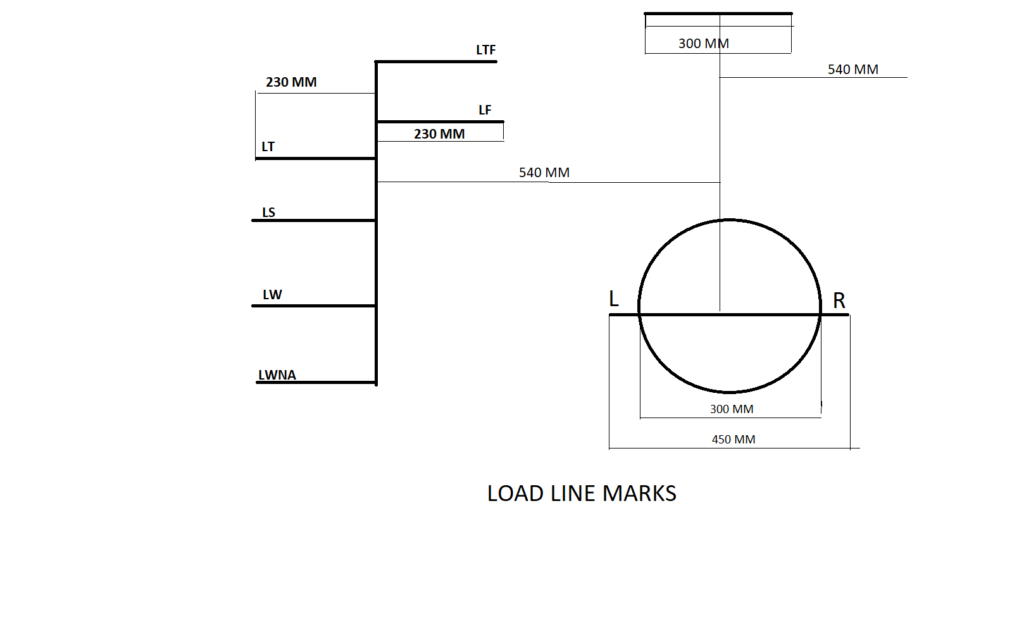
How to read Draft Marks on a Ship
The draftmarks are painted/marked at six (6) different points on the ship :
- Forward Port Side (FP),
- Forward Starboard Side (FS),
- Midship Port Side (MP),
- Midship Starboard Side (MS),
- Aft Port Side (AP),
- Aft Starboard Side (AS)
Nowadays Draft marks are marked as numbers followed by the letter M(denoting meters ) such as 5M, 6M, 7M.
The height of each mark is 10 cm and the distance between the mark in 10 cm.
If the water is just in line/ just touching the Lower mark 8M, the draft is 8.0 meters. If the water is in line with the top edge of 8 M, then the draft is 9 meters and so on.
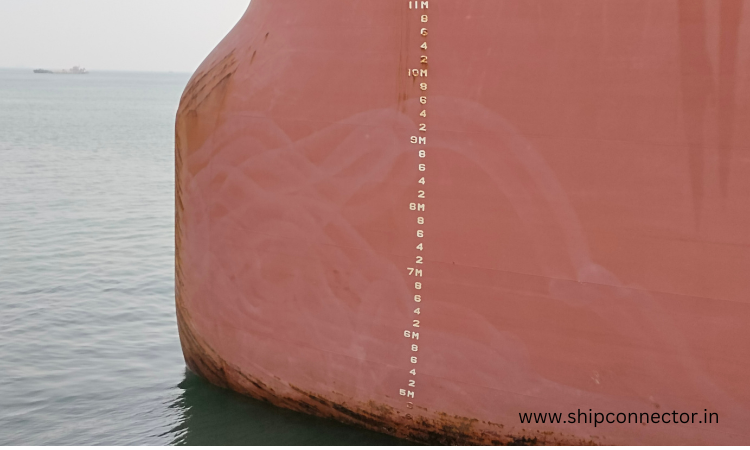
Draft Marks on Ships: Importance, Types, and Applications
Draft marks play a crucial role in the maritime industry by providing vital information about a ship’s draft, which is essential for ensuring stability, buoyancy, and safe navigation. This comprehensive article delves into the significance of draft marks on ships, the various types of draft marks, their placement, and their practical applications in maritime operations. Additionally, it explores the historical development of draft marks and how technological advancements have enhanced their accuracy and utility.
- Introduction to Draft Marks on Ships
1.1 Definition of Draft
1.2 Purpose of Draft Marks
1.3 Historical Development of Draft Marks - Importance of Draft Marks
2.1 Ensuring Stability
2.2 Optimizing Cargo Load
2.3 Safe Navigation in Shallow Waters
2.4 Compliance with Maritime Regulations - Types of Draft Marks
3.1 Load Lines
3.1.1 International Load Line Convention
3.1.2 Summer Load Line
3.1.3 Winter Load Line
3.1.4 Tropical Load Line
3.2 Tidal Draft Marks
3.2.1 Understanding Tidal Variations
3.2.2 Tidal Draft Marking System
3.3 Plimsoll Marks
3.3.1 Origin and Purpose of Plimsoll Marks
3.3.2 Plimsoll Line System
3.4 Draft Markings on Barges - Placement of Draft Marks on Ships
4.1 Fore and Aft Draft Marks
4.2 Symmetry and Alignment
4.3 Visibility and Readability
4.4 Materials and Painting - Applications and Usage of Draft Marks
5.1 Loading and Unloading Operations
5.2 Maintaining Ship Stability
5.3 Voyage Planning and Navigation
5.4 Complying with Port Restrictions
5.5 Dry Docking and Maintenance - Advancements in Draft Marking Technology
6.1 Electronic Draft Indicators
6.2 Draft Surveys and 3D Scanning
6.3 Integration with Ship’s Navigation Systems - Challenges and Limitations of Draft Marks
7.1 Weather and Environmental Factors
7.2 Accurate Measurement in Varying Conditions
7.3 Impact of Hull Fouling - Draft Marks and Maritime Safety
8.1 Preventing Overloading and Capsizing
8.2 Minimizing Groundings and Collisions
8.3 Role in Emergency Situations - International Regulations and Standards
9.1 International Maritime Organization (IMO)
9.2 Load Line Convention and SOLAS
9.3 Port State Control and Inspections - Conclusion
10.1 Significance of Draft Marks in Maritime Operations
10.2 Importance of Compliance with International Regulations
10.3 Future Developments in Draft Marking Technology
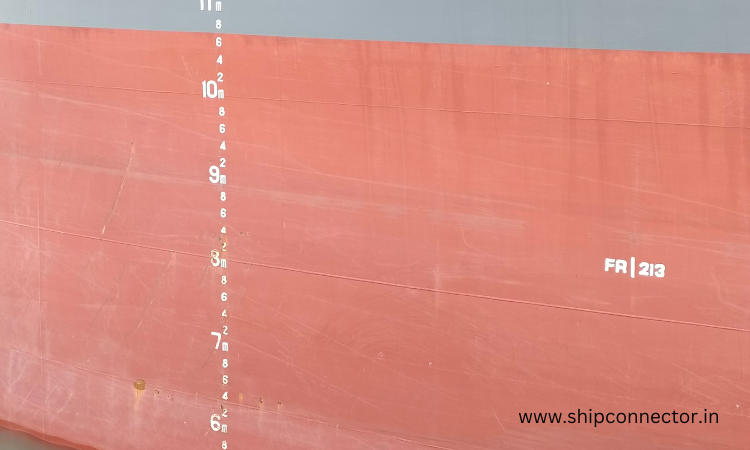
This comprehensive article aims to provide readers with a detailed understanding of draft marks on ships, their importance, various types, placement, applications, and their significance in ensuring maritime safety and regulatory compliance. Through this exploration, readers will gain valuable insights into how draft marks facilitate the smooth and secure functioning of the maritime industry.
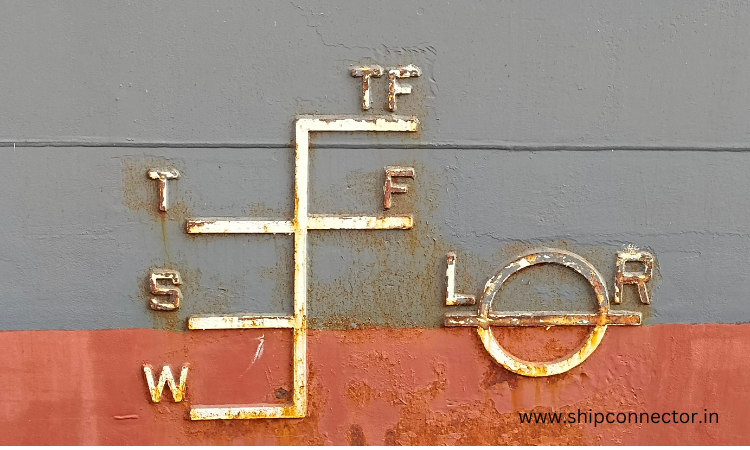
Role of Draft Marks in
Ship Stability:
The stability of a ship is of paramount importance for safe navigation at sea. Draft marks play a critical role in determining a ship’s stability by indicating its immersion level in the water. A well-balanced ship ensures that it can handle various weather conditions, maintain stability during cargo operations, and withstand external forces, such as waves and wind. By monitoring draft marks, ship officers can assess whether the ship’s weight distribution is within safe limits, helping to prevent issues like listing (tilting to one side) and capsizing.
Cargo Load Management:
One of the primary applications of draft marks is in cargo load management. Ships have specific load lines, as mandated by international regulations, which determine the maximum draft allowed under different loading conditions. By carefully monitoring draft marks during loading and unloading operations, ship operators can ensure that the vessel does not exceed its maximum permitted draft, preventing overloading and maintaining the ship’s stability and structural integrity.
Port Operations:
Ports impose specific restrictions on ship drafts depending on their infrastructure, navigational conditions, and water depth. Draft marks assist ships in complying with these restrictions and ensure they can safely enter and leave the port without running aground or causing any damage to port facilities. Furthermore, draft marks help port authorities efficiently allocate berths and plan cargo operations to accommodate ships of varying sizes and drafts.
Maintenance and Calibration of Draft Marks:
To ensure the accuracy and reliability of draft marks, regular maintenance and calibration are necessary. Marine growth and sediment accumulation on the hull can affect the visibility and accuracy of draft marks, necessitating periodic cleaning. Additionally, draft marks should be checked against known reference points or calibrated with electronic draft indicators to verify their accuracy and make any necessary adjustments.
Pollution Prevention:
Draft marks also indirectly contribute to pollution prevention. By ensuring ships comply with international regulations on maximum drafts, they help prevent excessive propeller wash, which can erode seabeds and contribute to sediment resuspension, impacting marine ecosystems and coastal areas.
Draft marks hold immense importance in the maritime industry as essential tools for ensuring ship stability, cargo load management, safe navigation, and compliance with international regulations. Through continuous advancements in technology and adherence to maintenance protocols, draft marks will continue to play a vital role in enhancing maritime safety and efficiency in the years to come.
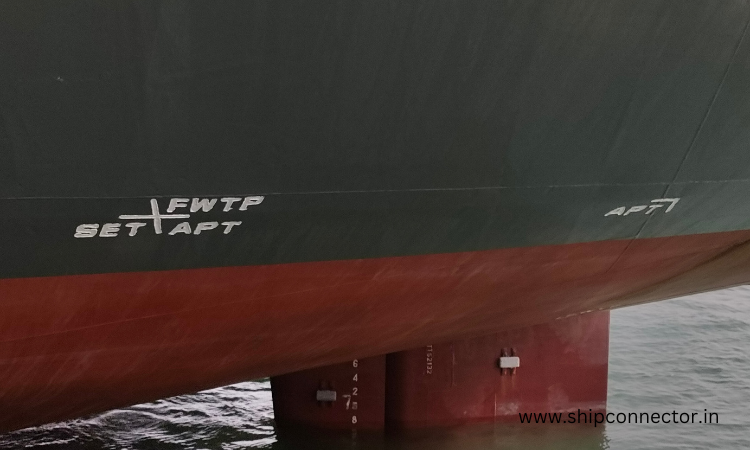
Draft Marks and Voyage Planning:
Draft marks play a crucial role in voyage planning. Before setting sail, ship officers assess the planned route, including the depth of water in various areas. By comparing the ship’s draft with the available water depth, they can ensure that the ship has sufficient clearance for safe passage through shallow waters, narrow channels, or other restricted areas. This process is particularly vital for large vessels or ships navigating in areas with tidal variations, where water depths may change significantly over short periods.
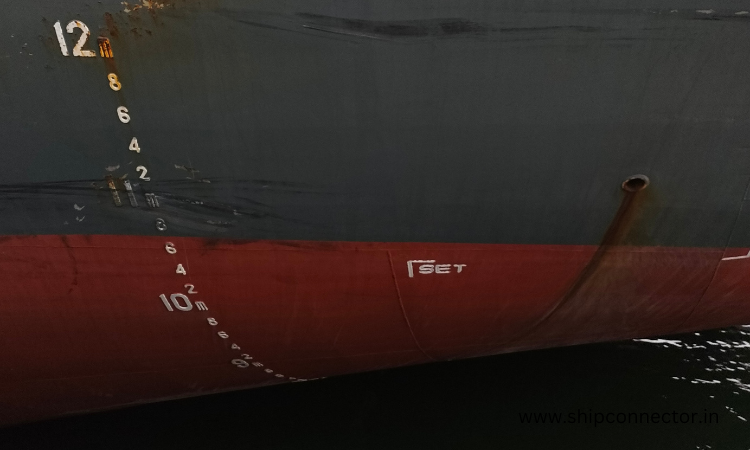
Draft Marks and Dry Docking:
During dry docking, a ship is taken out of the water for maintenance, inspections, and repairs. Draft marks are instrumental in ensuring the ship’s correct positioning on the dry dock platform, making certain that the ship’s entire hull is accessible for inspection and maintenance work. Additionally, before returning to the water, draft marks are used to verify the vessel’s draft levels, ensuring it remains within permissible limits and is ready for safe navigation.
Draft Marks and Emergency Situations:
In emergency situations, such as grounding or accidental damage to the ship’s hull, draft marks become critical for assessing potential damage and the ship’s stability. By comparing the current draft with the standard draft for the ship’s condition, crew members can quickly identify any abnormal changes in draft that might indicate structural damage or flooding.
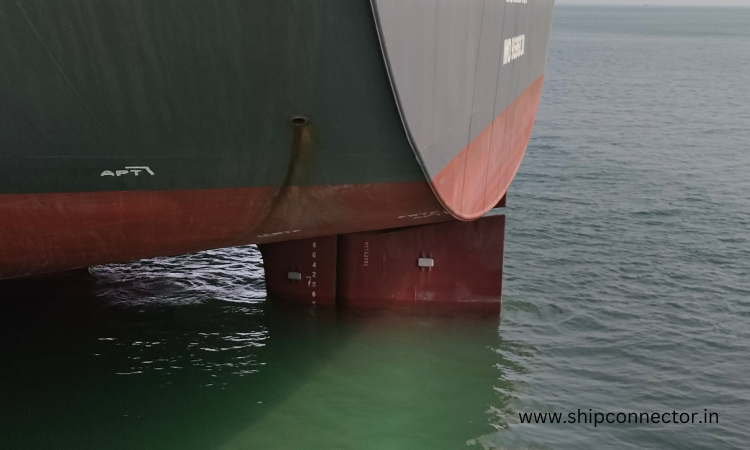
Click to read about : What is Plimsoll Line on a ship
Click to read about : Port captain Job description
